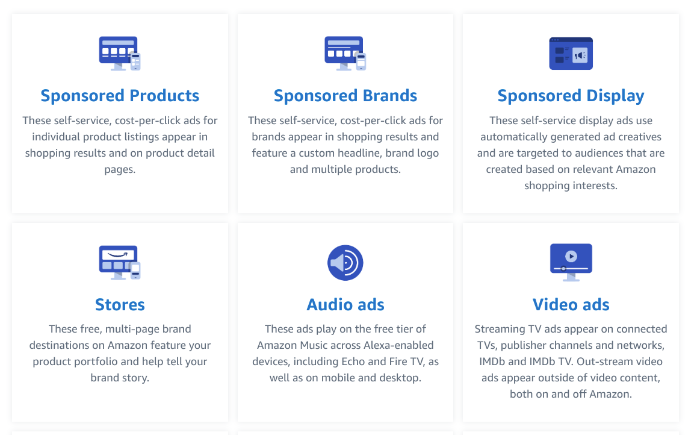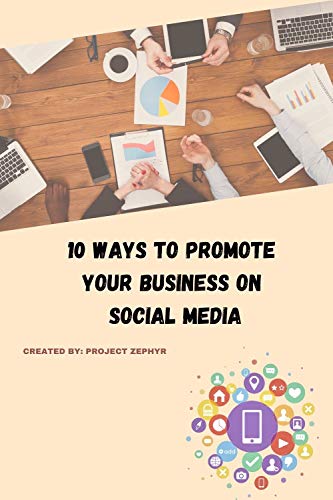
The content is the most important aspect of packaging design for a product. The Package copy is the most important piece of written content in a product package. Other key elements of packaging content include Safety information and Symbols. A front panel with information is a key part of packaging design. These tips will allow you to stand out among the competition with your packaging content.
Packaging copy is the very first piece of writing that a product has.
Effective package copy is vital for any business. This is the first piece that a potential customer will read. Unlike a website, brochure, or magazine article, package copy only has 3 seconds to capture the reader's attention and gain their comprehension. It is important to hire a professional copywriter.

Package copy should convey the benefits of the product. It should be concise, clear, and easy to read. Bolded text and bolded text will highlight the benefits of the product. Numeroted lists are another way to quickly convey important information. To make your copy more appealing, you can use logos or icons that are specific to your brand.
Symbols used for package labeling
Consumers can easily identify the contents of their products by using symbols for packaging labeling. These symbols are used for a variety of products, including cosmetics and foods. Some products have multiple symbols, based on their ingredients or usage. For example, "E" represents an average-fill product, while "L" represents a liquid.
Some symbols can also be used to warn people about hazards. Pictograms for certain chemicals must be displayed on the package labeling under the Globally Harmonised System of Classification and Labelling of Chemicals. These symbols usually take the form rhombuses enclosed within a red border. These symbols warn consumers of potential health or environmental hazards, as well as the potential for toxicity. These symbols also warn about adverse effects on aquatic ecosystems.
Designing a front panel with descriptive text
The front panel's purpose is to draw attention to the key points. It shouldn't contain too much copy. This will only distract the consumer from the important points. Additionally, it should include secondary points on a supporting panel. Lists are much more effective than paragraphs.

The front panel should have a headline that will attract the eye and get the reader to read more. You should make your copy as concise and precise as possible, as the space is very limited. It should also make your product attractive to the customer.
FAQ
Is there any way to get free traffic?
Free Traffic refers to the traffic that comes directly from organic search results without paying for ads. This traffic is known as natural or organic traffic. There are many ways to get free traffic, such as article marketing, social media marketing, blogging, etc.
Article Marketing is one way to get free traffic. Paid ads have a higher CPC, but the CPC is typically much lower than paid ads. Article marketing is also referred to as content marketing.
Social Media Marketing – Social media platforms like Facebook, Twitter and LinkedIn let you promote your business via advertising. These platforms are great for sharing updates, sharing photos, and building relationships with potential clients. Many businesses opt to purchase ad space on social networks because they want to reach a larger audience for a more affordable price.
Blogging-Blogging is another great way of generating free traffic. Writing quality content that people like reading will help you attract visitors. Once you're attracting visitors, you can monetize your blog by selling products or services.
Email Marketing - Although email marketing has been around since before the advent of the Internet it is still one of the most effective ways to drive traffic and sales to your site. Regular email marketing is a great strategy to increase your subscribers and ultimately sell something.
What is an advertisement buyer?
An advertiser purchases advertising space on TV, radio or print media.
Advertisers pay for the time their message appears.
They don't necessarily want the best ad, but they are more interested in what is most effective at reaching their target audience.
Advertisers may have demographic information such as the age, gender, marital status, income level, occupation, hobbies, and interests of their customers.
These data can be used to help advertisers decide the most effective medium. An example is direct mail that appeals to older people.
Advertisers also look at the competition. Advertisers will look at the competition to see if similar businesses are nearby.
Advertisers should also consider how much money they have available and how long it takes to use it.
What is the cost of advertising on social media?
Social media advertising is expensive if you choose to take this route. You will be charged monthly for your time spent on each platform.
Facebook - $0.10 per 1,000 impressions
Twitter - $0.20 per 1,000 impressions (if you tweet)
If you send out invitations to Linkedin, $0.30 per 1,000 impressions
Instagram: $0.50 per 1,000 impressions
Snapchat - $0.60 per 1,000 impressions ($0.40/user)
YouTube - $0.25 per 1,000 views
Tumblr – $0.15 per 1000 impressions for text postings
Pinterest - $0.05 per 1,000 impressions per month
Google + - $0.15 - $0.20 per 1 Million Impressions
Tumblr: $0.15-$.20 per 100,000 impressions
Vimeo – $0.20- $0.25 Per 10,000 Impressions
Soundcloud: $0.20-$0.25 Per 1 Million Plays
StumbleUpon - $0.20 -$0.25 per 1 billion pageviews
Digg: $0.20 – $0.25 per 1,000 diggs
Reddit - $0.20-$0.25 per 1000 comments
Wordpress – $0.20--$0.25 Per 500 Comments
Flickr - $0.20 -- $0.25 per 5,000 photo uploads
What is the best way to learn about television advertising?
Television advertising is an extremely effective medium for reaching many people at once. It was also very expensive. However, if you use it well, it can be incredibly powerful.
Although there are many types, TV ads share certain common characteristics. The first thing to remember when planning any type of TV ad is to ensure it fits into its category. You shouldn't attempt to make a lifestyle commercial the same as a product ad. Your message should remain consistent throughout the campaign.
It is important to remember that ads are best aired during prime-time. This is because most viewers watch TV while relaxing in front of the set. You want them to be relaxed enough to focus on your words.
Finally, just because you've a lot of money doesn't mean you'll get great results. The opposite may actually be true. According to a University of California study, commercials that aired on popular TV shows had lower sales than those that aired on unpopular programs. So, if you spend a lot of money on TV advertising, ensure you do it right.
What should you know about printing advertising?
Print advertising is an effective medium for communicating with consumers. It is used by many companies for promoting products and services. The goal is to get the consumer's attention.
Print ads are usually one page in length and can include text, images and logos. They may also include sound, animation, video, and hyperlinks.
The following are the main types print advertisements:
1. Brochures - These are large format printed pieces designed to attract people into stores. They often have colorful pictures and eye-catching designs.
2. Catalogues are smaller versions than brochures. They are sent to customers who have requested specific information.
3. Flyers – These are tiny pieces of paper distributed at events like concerts or fairs. They can be given at retail outlets but must be paid for.
4. Posters - These flyers can be larger than the ones you see on the flyer. They are displayed on walls, fences, and buildings. They are created by computer software programs in order to grab passersby's eyes.
5. Direct mail: These are postcards or letters that are sent directly by post to potential customers. Companies send these out periodically to remind existing customers about their business.
6. Newspaper Ads - These are placed in newspapers and magazines. These ads are often quite long and include both text and images.
What is an advertising campaign?
An advertisement campaign is a series containing advertisements to promote a product. It can also refer entirely to the production of such ads.
The Latin word for "to Sell" gives rise to the term "ad". Marcus Terentius Varro, 116-27 BC, was the first to use it. He used it as a verb that meant "to make a sales."
Large companies or agencies usually do advertising campaigns. There may be many media types involved, including print and television as well as radio, TV, and internet.
Advertising campaigns can last up to six months and have specific goals. Some campaigns are designed to increase awareness, while others aim to increase sales.
How can I choose my target audience
Begin by talking to yourself and people close to you. If you don’t know where or how to start, ask yourself "Whom are I trying to reach?"
Ask yourself these questions: Who are the most influential people in my industry? What problems do they have to deal with every day? What are their top talents? Where are they located online?
Go back to the beginning when you started your business. Why did you start? What was your problem and how did it solve?
These answers will help identify your ideal clients. They will also reveal their personality and reasons for buying from them.
You can also look at your competitors' websites and social media pages to find clues about whom they cater to.
Once you've identified your target customers, you'll need to decide which channel(s) to use to reach them. An example: If you provide services to realty agents, you may create an informational website for home buyers.
If you provide software to small businesses, you could develop a blog targeting those companies' owners.
If you sell clothing, you could create a Facebook page for teens. If you own a restaurant, you can set up a twitter account to provide information for parents searching for child-friendly options.
The important thing is that you have many options for getting your message across.
Statistics
- Advertising's projected distribution for 2017 was 40.4% on TV, 33.3% on digital, 9% on newspapers, 6.9% on magazines, 5.8% outdoor, and 4.3% on radio. (en.wikipedia.org)
- In 1919 it was 2.5 percent of gross domestic product (GDP) in the US, and it averaged 2.2 percent of GDP between then and at least 2007, though it may have declined dramatically since the Great Recession. (en.wikipedia.org)
- Google will display whichever ad type (CPM or CPC) is expected to earn more revenue for the publisher, which is in Google's best interest since they take a 32% share of the revenue. (quicksprout.com)
- It's 100% reliant on your website traffic. (quicksprout.com)
External Links
How To
How to make Sponsored Ads on Facebook
Facebook has quickly become one the most widely used social networking platforms. It has been estimated that there are 1.79 billion active monthly users worldwide. The number is increasing every day.
Facebook is free, but you have to pay if you want to reach your audience directly. You can also use paid advertising options, such as promoted posts or banners.
Log in to your existing application if you have one. Click "Create New App" if you don't have an app already registered. These are the steps to follow:
-
Click "Add Platform" in the Apps section.
-
Select "Advertising", then click on Continue.
-
Please complete the form and submit it.
-
After approval, you will be issued a Client ID as well as a Secret Key. These keys and Client IDs should be copied.
-
and paste the keys into the appropriate fields.
-
Select the currency and enter the name of the campaign.
-
Click "Begin Campaign".
-
Follow the instructions until the first banner appears. The URL will be copied and you can return to Facebook.
-
Copy the code and paste it into the box provided to you by Facebook.
-
Click on "Save Changes"
-
Your ad needs to be now live
-
Repeat steps 10-12 for each banner you would like to make.
-
When finished, click "Continue" and proceed with the rest of the process.
-
Finalize the creation of your ad groups.
-
Once complete, click "View All Ads" to see all of your campaigns.
-
To delete any ads click on the "Remove Ads” button next to each individual ad.
-
If you're not seeing any results after running your campaign, check to ensure you followed the directions correctly.
-
Check the date range of your campaign.
-
Make sure you set your budget appropriately.
-
You can save your changes.
-
Before clicking "Submit", review the settings of your campaign.
-
You can wait for your ads on your timeline to appear.
-
Congratulations on a job well done!
-
Let's now look at some tips to improve your results.